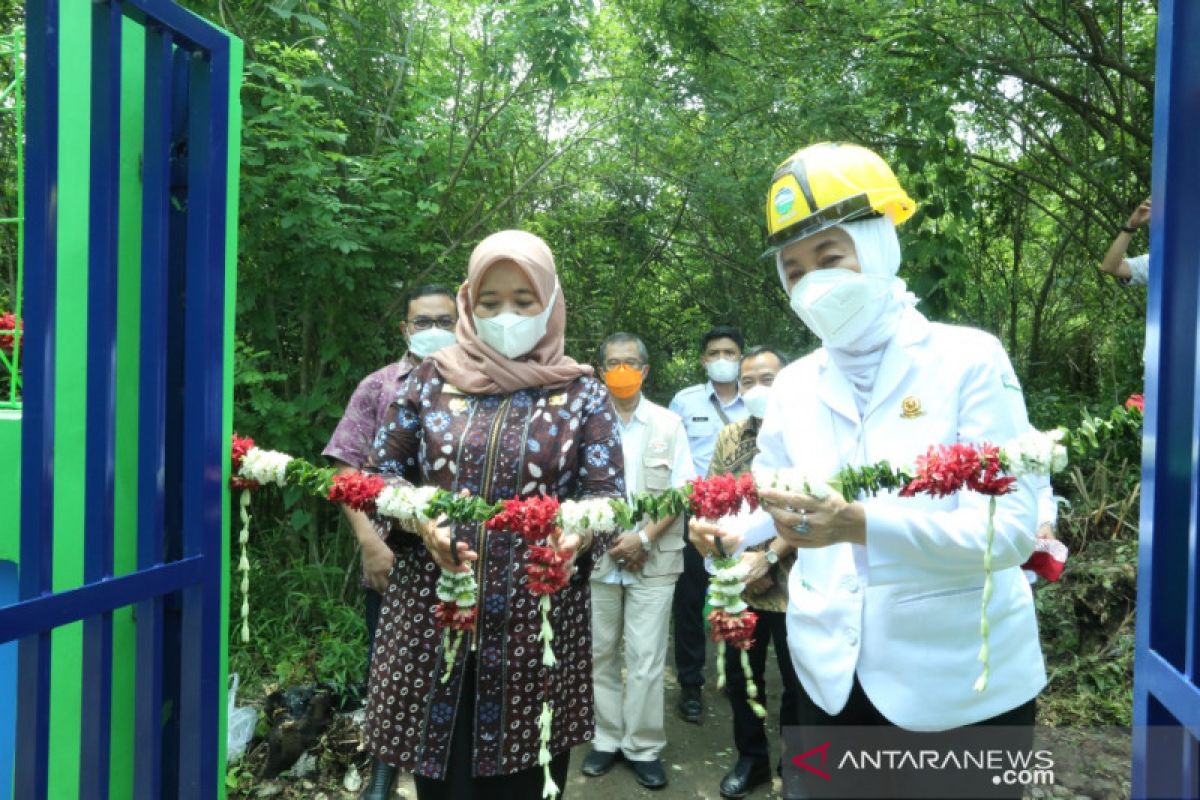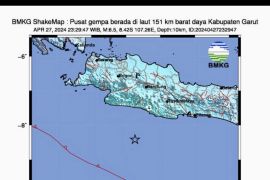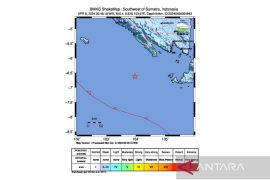"These shelters and seismograph networks are needed to reinforce the network to improve the efficiency and accuracy of information and tsunami early warnings at the Meteorology, Climatology and Geophysics Agency," BMKG Head Dwikorita Karnawati, said in a statement received here on Sunday.
Karnawati said that some 411 sensors had been installed in the Earthquake Monitoring System Network. Currently 428 sensors had been installed after the additional 17 sensors, she informed.
The addition of 17 seismographs was marked by her inauguration of a recently installed seismograph sensor, coded SYJI, in Candi Abang Sub-district, Yogyakarta, on Saturday December 18.
She explained that the number and placement of sensors was determined based on the nature of earthquakes that have occurred. For example, they were caused by friction between tectonic plates such as the Indo-Australian Plate, Eurasian Plate, Pacific Plate and Philippine Plate, as well as active faults that have been identified.
The possibilities have been evaluated, considered, and taken into account by the agency and its collaborative partners, a team of experts from the Bandung Institute of Technology and Gadjah Mada University, coordinated by Prof. Nanang Puspito.
"With the addition of this seismograph, we want to offer maximum effort in providing weather, climate, earthquake and tsunami information services in a fast, precise, and accurate manner," Karnawati elaborated.
Related news: Indonesia needs to build awareness in disaster-prone areas: MPR
Since 2016, the agency has been increasingly aware that Indonesia is a very disaster-prone country, yet the nation is not equipped with sophisticated technology to counter them. To address the issue, the agency continuously add and update tools and technology as means to protect the public from disasters.
Although earthquakes and tsunamis are unpredictable, their impact could be minimized through efficient earthquake analysis resulted from strong seismograph network, precise tsunami modeling, widespread information dissemination to the public, and appropriate education of disaster mitigation.
Tsunami Early Warning and Monitoring System is a manifestation of Indonesia's progress and preparedness in an effort to prevent, or at least reduce, the impact of the earthquake and tsunami that could happen anytime and anywhere.
"This is the Meteorology, Climatology, and Geophysics Agency's effort to protect the entire nation from the threats of an earthquake and tsunami. Hopefully, the Indonesian citizens will be more aware and also resilient in facing disasters," she remarked.
According to the agency's data, the frequency of earthquakes in Indonesia tends to increase every year.
From 2008 to 2016, the agency recorded an average of 5,000-6,000 earthquakes a year. Just in 2017, the number of earthquakes increased to up to 7,169. The number of earthquakes spiked up in 2019, reaching more than 11,500..
As for tsunami disasters, there have been a total of 246 tsunamis in Indonesia from 1600 to October 2021.
Related news: People of disaster-prone indonesia urged to remain vigilant
Translator: Prisca T V, Mecca Yumna
Editor: Suharto
Copyright © ANTARA 2021












